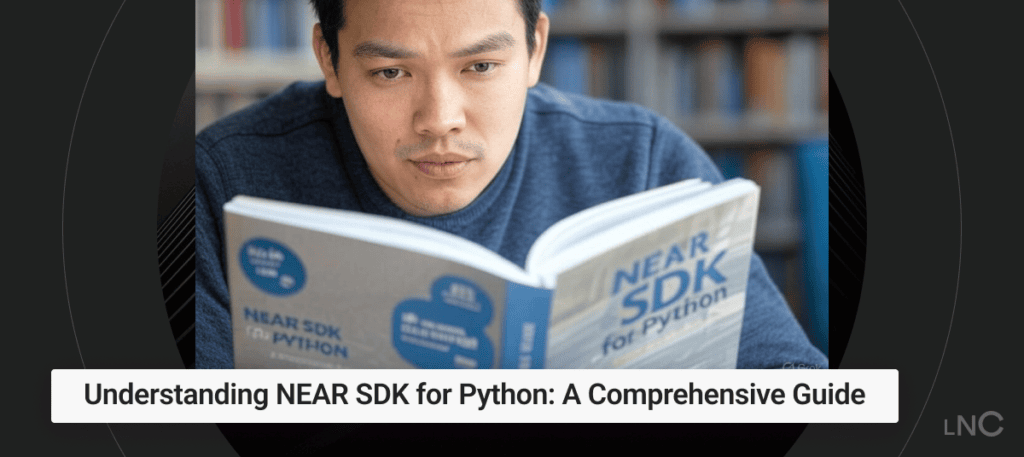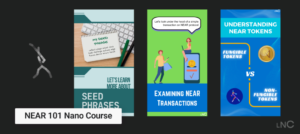Introduction
The Web3 landscape is evolving rapidly, with NEAR Protocol at the forefront of innovation. One groundbreaking advancement is NEAR Intents, designed to simplify blockchain interactions by allowing users to specify goals instead of detailing complex transaction steps. By abstracting these intricacies, NEAR Intents is redefining blockchain usability and making decentralized finance (DeFi) accessible to everyone.
What Are NEAR Intents?
An intent in NEAR represents a high-level declaration of a desired outcome. Rather than manually executing each transaction step, users specify clearly what they wish to achieve—like “swap Token A for Token B at the best price”—while the system manages the detailed processes to fulfill this request. This approach makes blockchain interactions intuitive and broadly accessible.
How NEAR Intents Work
NEAR Intents operate via a structured, decentralized process involving:
- Intent Creation: Users or AI agents define a desired outcome, broadcasting their intent to a network of solvers.
- Solver Competition: Specialized off-chain services (solvers) analyze the intent, competing to fulfill it efficiently and cost-effectively. These solvers provide proposed solutions as quotes for user approval.
- Intent Execution: Once a solution is approved, the chosen solver executes the intent through the NEAR Intents smart contract. This contract ensures correct state changes, settling and reporting the outcome securely to the user.
This model simplifies blockchain interactions while significantly improving operational efficiency.
🎥 Video Credits
-
Title: NEAR Intents 101 – A New Way to Transact | Build Smarter with AI & Blockchain by NEAR DevHub
Key Features of NEAR Intents
- Outcome-Driven: Users focus on the desired result, leaving the execution details to the system.
- Seamless Cross-Chain: Enables smooth interactions across multiple blockchain networks without complex bridges.
- Secure and Permissionless: Provides enhanced security and decentralization, allowing any developer to build and launch financial products without restrictions.
- AI Integration: Easily integrates with AI agents, enhancing intelligent decision-making processes and enabling automated blockchain interactions.
Supported Blockchains and Address Types
NEAR Intents facilitates seamless cross-chain interactions by supporting a diverse range of blockchains and their respective address formats. Below is an organized list categorizing these supported chains:
EVM-Compatible Chains
These chains utilize Ethereum Virtual Machine (EVM) architecture, allowing for compatibility with Ethereum-based tools and applications.
-
Ethereum: Standard
0x-prefixed 42-character hexadecimal addresses. -
Gnosis: EVM-compatible addresses.
-
Bera: EVM-compatible addresses.
-
Base: EVM-compatible addresses.
-
Arbitrum: EVM-compatible addresses.
-
Aurora: EVM-compatible addresses.DeepNewz
UTXO-Based Chains
These chains follow the Unspent Transaction Output (UTXO) model, commonly used in cryptocurrencies like Bitcoin.
-
Bitcoin: Supports multiple address formats including Legacy (
1), P2SH (3), Bech32 (bc1), and Taproot (bc1p). -
Dogecoin: Supports P2PKH/Legacy addresses starting with
D. -
ZCash: Supports Transparent addresses starting with
t1ort3.reflexivityresearch.com+5Messari+5GitHub+5
Other Supported Chains
These chains have unique architectures and address formats:
-
NEAR: Supports both Named addresses (e.g.,
example.near) and Implicit addresses (64-character hexadecimal). -
Solana: Uses Base58-encoded Ed25519 public keys.
-
Tron: Utilizes Base58Check-encoded addresses starting with
T. -
XRP: Supports Classic addresses starting with
r.
Note: While NEAR Intents supports a broad range of chains, some address types, especially on chains like ZCash, Dogecoin, and XRP, may have partial support with certain operational limitations.
This extensive support enables NEAR Intents to offer robust cross-chain functionalities, streamlining user experiences across various blockchain ecosystems.
Real-World Applications
NEAR Intents unlock numerous practical use cases beyond traditional DeFi:
- Decentralized Finance Infrastructure: Enables cross-chain trading and diverse financial instruments.
- Multichain Abstraction: Simplifies integration across multiple chains, reducing operational complexity and cost.
- Intent-Based Architecture: Replaces traditional automated market maker (AMM) models, providing improved liquidity access and competitive pricing.
- AccountFi: Allows users to trade, lend, and manage diverse asset types—including NFTs, fungible tokens, and non-transferable assets like Soulbound Tokens (SBTs). For example, managing NFT-based memberships or diversified cross-chain asset portfolios.
The Role of AI in NEAR Intents
AI agents significantly enhance NEAR Intents by autonomously optimizing transactions, balancing cross-chain asset portfolios, and efficiently navigating multi-chain environments. These capabilities open the door to innovative applications such as AI-driven commerce, automated cross-chain liquidity management, and decentralized gig marketplaces.
Getting Started with NEAR Intents
Developers and users eager to dive into NEAR Intents can use these comprehensive resources:
- Official Documentation: Detailed explanations, tutorials, and architectural insights (NEAR Intents Documentation).
- GitHub Repository: Tools, smart contracts, and examples to integrate and build (NEAR Intents GitHub).
- Quick-Start Example: A simple Python agent implementation available here.
Conclusion
NEAR Intents are revolutionizing blockchain interactions through simplicity, user-centric design, and advanced AI integration. By abstracting complexity and enhancing operational efficiency, NEAR Intents are paving the way for an accessible and intelligent Web3 ecosystem.
Start exploring the future of simplified blockchain interactions today—visit the NEAR Intents Documentation to learn more.
Updated: June 19, 2025




this is huge, using AI is the future of web3 and near intent are on it
🧑 100% userNEAR Intents the best for NEAR Protocol, we KNOW!
🧑 100% usery ahora el near esta en alza
🧑 100% userAI definitely is the answer to cross chain trust. This technology never stops amazing me. This is huge for not only near but the entire blockchain ecosystem.
🧑 100% userThis is really exciting!
🧑 100% user